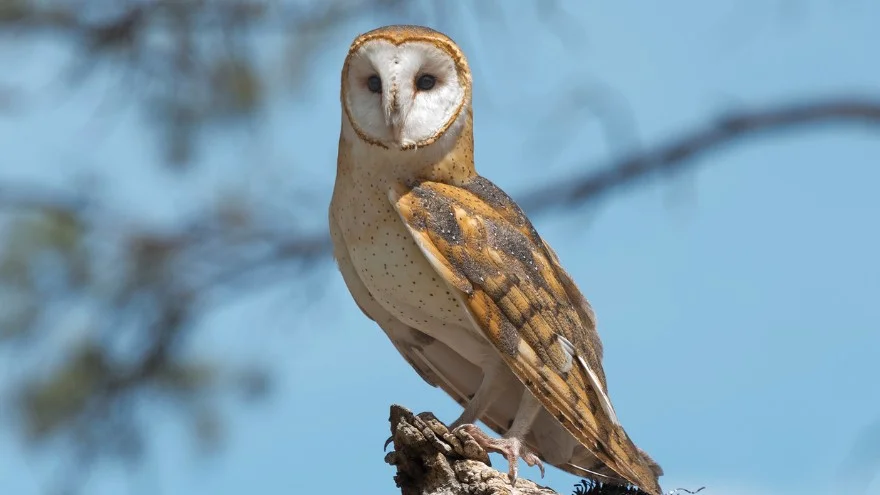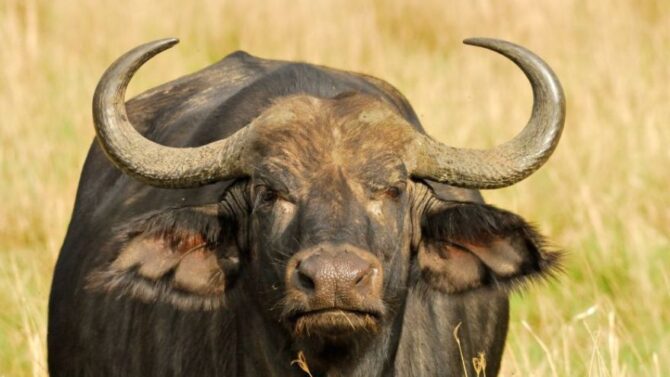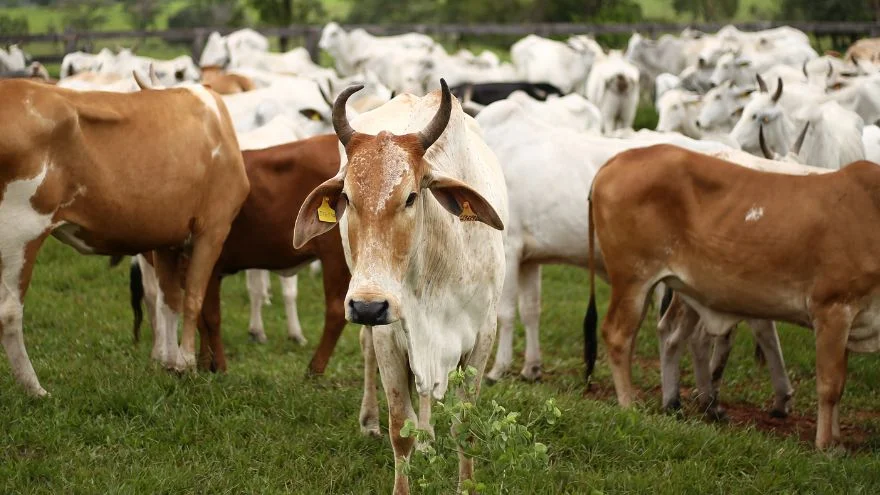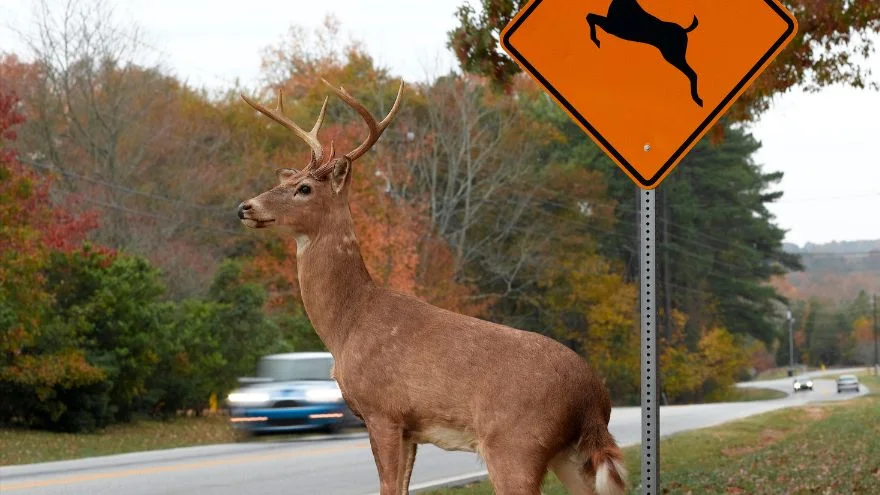Owls—also known as Strigiformes—are often perceived to be nocturnal birds. Even popular expressions and phrases such as “night owls” describe people who stay up late, depicting owls as nocturnal.
However, this popular belief is not entirely true as some owl species are most active during the day.
Owls are endowed with the capacity to survive in any environment, with over 250 Owl species found worldwide.
The different species of owls that can be found in France include the Eurasian eagle-owl, Eurasian scops owl, Eurasian pygmy owl, short-eared owl, long-eared owl, etc.
This article will discuss extensively the top nine species of owls in France, including their physical features and how to identify them.
Species Of Owls In France
1. Short-Eared Owl (hibou des Marais)
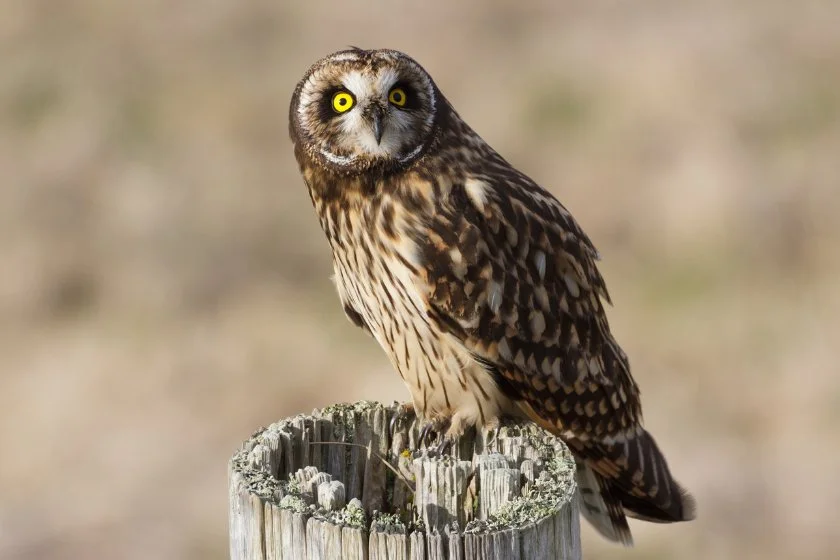
- Size: 21-23cm (length), 54-58cm (wingspan), 140-220g (weight)
- Colors: White, brown, cream
- Features: Round head, long wings, short tail, tawny breast
- Habitat: Grasslands, low vegetation, savannah, meadows, marshes, dunes, agriculture areas.
- Scientific name: Asio flammeus
The short-eared owls, also called Flammeus, are a grassland species of owls belonging to the Strigidae family and are mostly found in southwestern France. They are medium-sized owls with rounded heads.1
The short-eared owl has yellow eyes with black features beneath and dark markings at the wrist of the underside and upper side of its wings.
When in flight, you can hardly tell if it’s a short-eared or a long-eared owl except by behavior.
Short-eared owls are not entirely nocturnal as they often hunt during the day when the voles are active.
They have migratory behaviors, abandoning specific areas due to food scarcity. This specie of owl are widely distributed across but predominantly in Southwestern France.
2. Long-Eared Owls (hibuo more-duc)

- Size: 35-39cm (males), 37-41cm (females), 84-95 cm (wingspan), 210-370g (weight)
- Colors: Orange, grey, black, cream, and brown
- Physical Features: Black beak, long ears, orange eye
- Habitat: Woodland, conifer groves, forests
- Scientific Name: Asio otus
Long-eared owls do not have a large population in France and are known for their camouflage abilities. This owl species got its name from the long tufts of feathers on their head.
They also have a distinct bright orange-colored eye with a black beak alongside a cream and brown-colored body with a touch of grey.
Long-eared owls have an extensive breeding range and are pleasant. They are hard to locate, hence the best way to identify them is to listen to their sounds.
The male long-eared owls are pretty talkative during mating season. Their call is repeated 10 to 200 times and sounds like a low “hoo.” They are also called cat owls because they possess cat-like features.
3. Little Owl (chevêche d’Athèna)
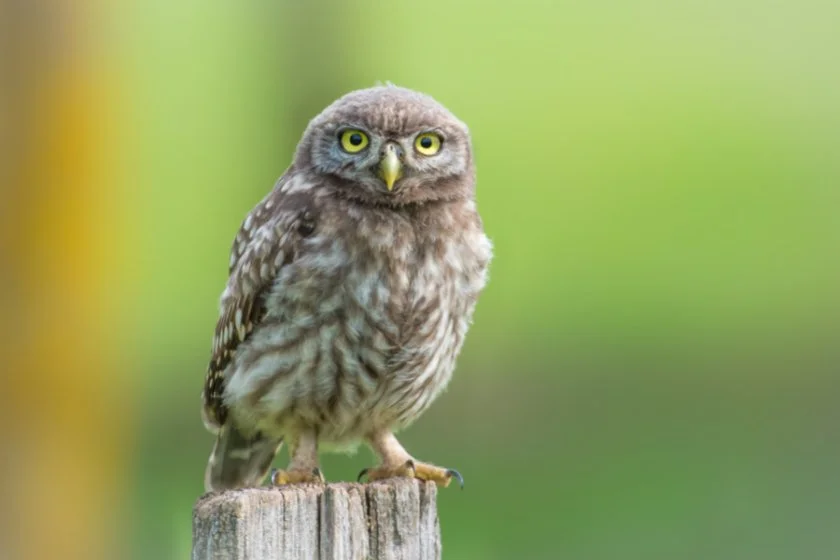
- Size: 21-23 cm length, 54-58cm (wingspan), 140-222g (weight)
- Colors: White, brown, and cream
- Physical Features: Black collar, brown feathers, broad eyes
- Habitat: Lowland farmland, parkland, orchards
- Scientific name: Athene noctua
The little owls possess black collars, long broad white-colored eyes with a mix of yellow, and legs that are colored white.
Their bodies are covered with dark brown feathers down to the tail end section of their body, and the adult owl grows up to 22cm in length and 56 in wingspan.
Little Owls occupy a wide range of habitats in France. They are the owl species with the highest population in France and are vocally active throughout the year, especially during mating.
When communicating, they give off a fluted call repeated at intervals. When distressed, little owls make a series of notes like “kwiff, kwiff.”
4. Tawny Owl (Chouette hulotte)
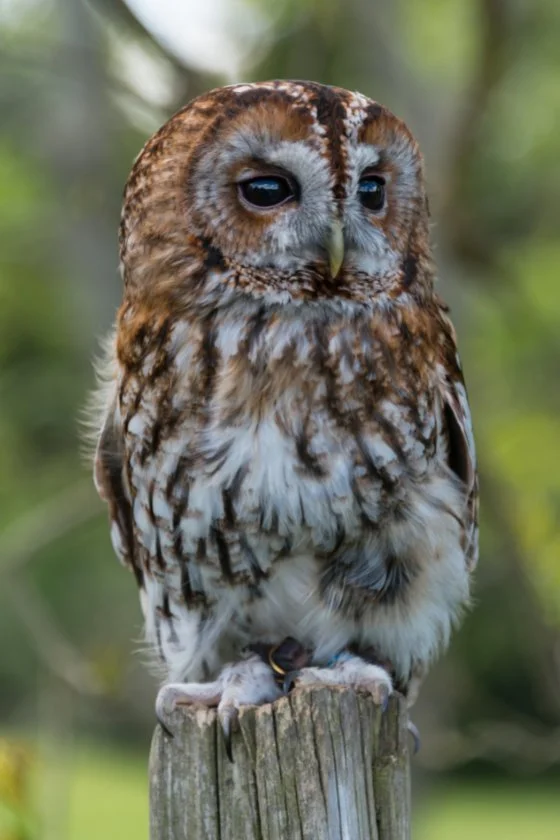
- Size: 37-40cm length, 94-105cm wingspan, and 330-580g weight.
- Colors: White and brown
- Physical Features: Rounded head, dark feathers surrounding its eyes
- Habitat: Farmland, urban areas, woodland.
- Scientific name: Strix aluco
Tawny owls are mostly found in forests with adequate access to water. They have disc-shaped faces with eyes that are dark brown with a mix of pale.
Tawny owl attacks their prey silently, have the uniqueness of mating for life, and move in with mates. Their adults have 38-46 cm lengths, wingspan between 81-104 cm, and weigh 385-800 g.
The Tawny specie uses a vicious “coo-wik” cry to express attack. They can be spotted in parks, gardens, and sometimes cemeteries.
The male Tawny owls mark their territories and announce to females during the mating season through hooting calls.
5. Eurasian Eagle Owl (hibuo grand duc)
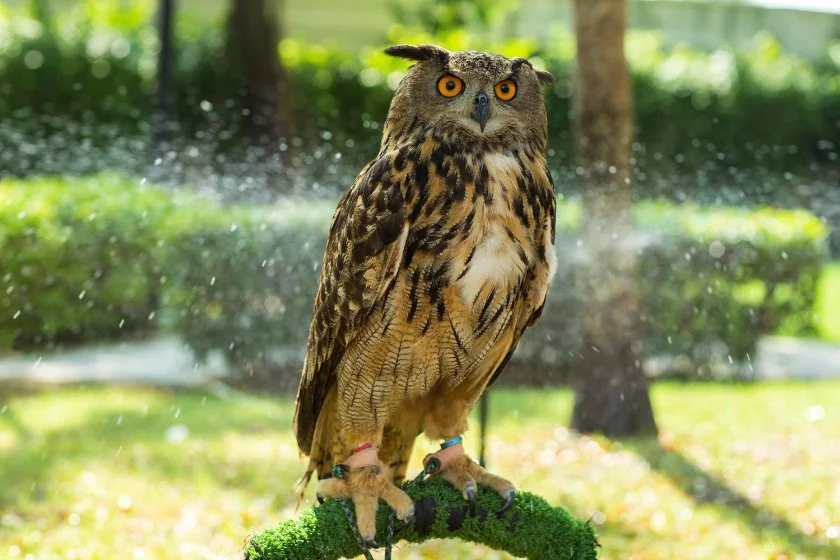
- Size: 69-75cm length, 1.5- 4kg weight, 155-180 cm wingspan
- Colors: Brown, white, black
- Physical Features: Mottled brown bodies, yellow eyes, and pale under-wings
- Habitat: Woodlands, deserts, mountains, open grassland, and river beds.
- Scientific name: Bubo bubo
The Eurasian eagle owl is regarded as one of the most vicious owl species. Its body length falls between 66-71 cm, and it is characterized by deep blue-colored eyes with a mix of orange.
Eurasian eagle owls mostly prey on small mammals, larger mammals, fish, reptiles, and other bird species. They can also be found in different habitats.
The Eurasian Eagle-owl is located in southern France and is nocturnal. This owl species is most vocal during the fall and winter, producing sounds like “OO-OO-oo” and “kveck-kveck” to warn others of danger or when in distress.
They are regarded as one of the strongest species of owls.
6. Eurasian Scops Owls (petit duc scope)

- Size: 16-21cm (length), 60-134g (weight), 67-76mm (tail length)
- Colors: Grey, brown, black
- Physical Features: Yellow eyes, grey bill, a brown facial disc
- Habitat: Rocky landscapes, parks, large gardens, groves, orchards, deciduous forests, cultivated areas with scattered trees or woods
- Scientific name: Otus scops
The Eurasian scops owls are small owls belonging to the owl family known as Strigidae. They have yellow eyes with a mix of grey-black.2
The adult Eurasian scops owl is 19-21 cm in length with a wingspan of 50-64 cm. Adult females weigh about 15-25 g more than their male counterparts.
They have broad and long wings with short tails. You’d mostly find them living in trees.
This owl species have small ear tufts that become visible when on alert. They have a life span of up to 12 and a half years.
Both sexes make a ‘phew’ sound and a fierce ‘keek’ to communicate or raise the alarm when frightened.
7. Boreal Owl (nyctale de Tengmalm)

- Size: 21-29cm length, 120g weight, 21 inches wingspan
- Colors: Brown, grey, white
- Physical Features: White spots dotted crown, yellow eyes, a greyish white facial disc
- Habitat: Boreal forest
- Scientific name: Aegolius funereus
The Boreal owl is also referred to as the Tengmalm owl. It has a bright yellow-colored-eyed with circular faces.
These birds have variant patterns and colors ranging from red to brown and grey. The adult Boreal owl is 22-27 cm in length with a wingspan of 50-62 cm.
They live in the Boreal forest, hence the name. Unfortunately, these owl species do not have a very long lifespan as they only live for 7- 8 years.
To find this particular species in France, one has to look for tiny owls or around tree trunks, birch, or conifer trees.
8. Eurasian Pygmy Owl (chevêchette d’Europe)

- Size: 17-19cm (females), 15-17cm (males) length, 47-83 g weight, 93-110 mm wingspan
- Colors: Greyish brown, white
- Physical Features: Grey eyebrows, yellow eyes, hooked beak
- Habitat: Desert rivers, washes, a coniferous forest of the boreal zone, forest in higher Mountains
- Scientific name: Glacidium passerinum
This species of owl is the smallest and is mostly found in coniferous forests of the Boreal zone. The adult Eurasian Pygmy owl is 15-19 cm in length, has a 93-110 mm wingspan, and weighs 47-83 g.
Males are usually smaller than females. These birds have yellowish eyes with pale white eyebrows, and the feather colors vary from grey to brown and dark brown.
They are mostly active at dusk and dawn. When excited, they flick side to side.
They typically make a monotonous series of clear notes which sounds like “gewh, gewh, gewh,” and “gih gih”. These species live up to 6-7 years in the wild.
9. Barn Owl (bärn ˌoul)
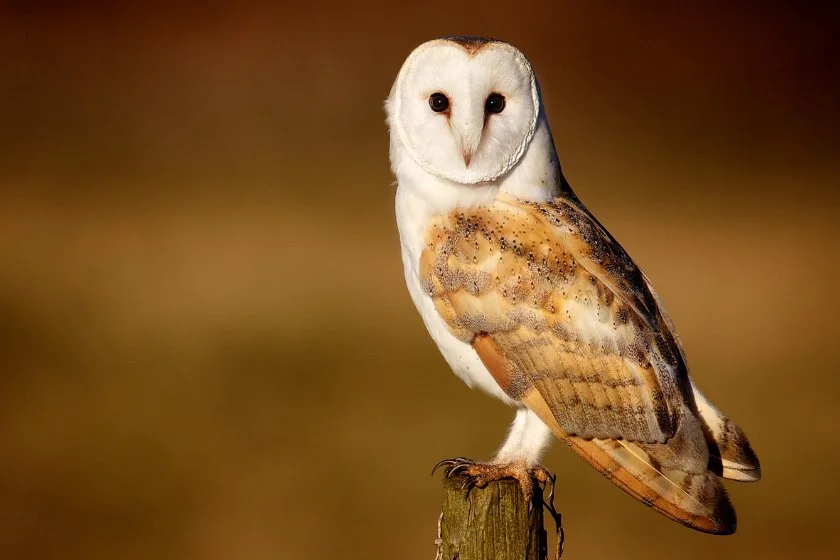
- Size: 32-40cm (length), 400-700g (weight)
- Colors: Gray, white, buff
- Physical Features: Dark pale eyes, buff upper wings, facial discs
- Habitat: Farming habitat, spinneys, and ditches.
- Scientific name: Tyto alba
Barn owls possess black eyes, a pale grey beak, and white facial discs. Their feathers are mostly grey-colored, they have long wings and to top it up, there’s the unique short tail.
The latter distinguishes them from other flying owls. They have pale and heart-shaped faces.
The adult barn owl is 29-44 cm in length with a wingspan of 80-95 cm.
Not only are barn owls the most abundant species of owls, but they are also one of the birds with the highest geographical spread worldwide.
You can find them on farms, barns (where they got their name), spinneys, ditches, and villages.
Final Thoughts
Owls of different species and sizes are found in mountains, rocks, woodlands, farms, marshes, ditches, and deserts in different parts of France.
Cases of attacks by owls in France are rare because these birds are not dangerous to humans. They do not attack unless you encroach on their territory, young ones, or mates.
If you are in France and decide to jog through the woodlands or forests, you may come across owls, but they will not attack you if you don’t creep into their habitat.
Next up…
References & Notes
- Arroyo B., Bretagnolle V. 1999. Breeding biology of the Short-eared Owl (Asio flammeus) in agricultural habitats of south western France. Journal of Raptor Research
- Barbraud C., Bavoux C., Et. al. The demography of an increasing insular Eurasian Scops Owl (Otus scops) population in western France. International Journal of Avian Science
